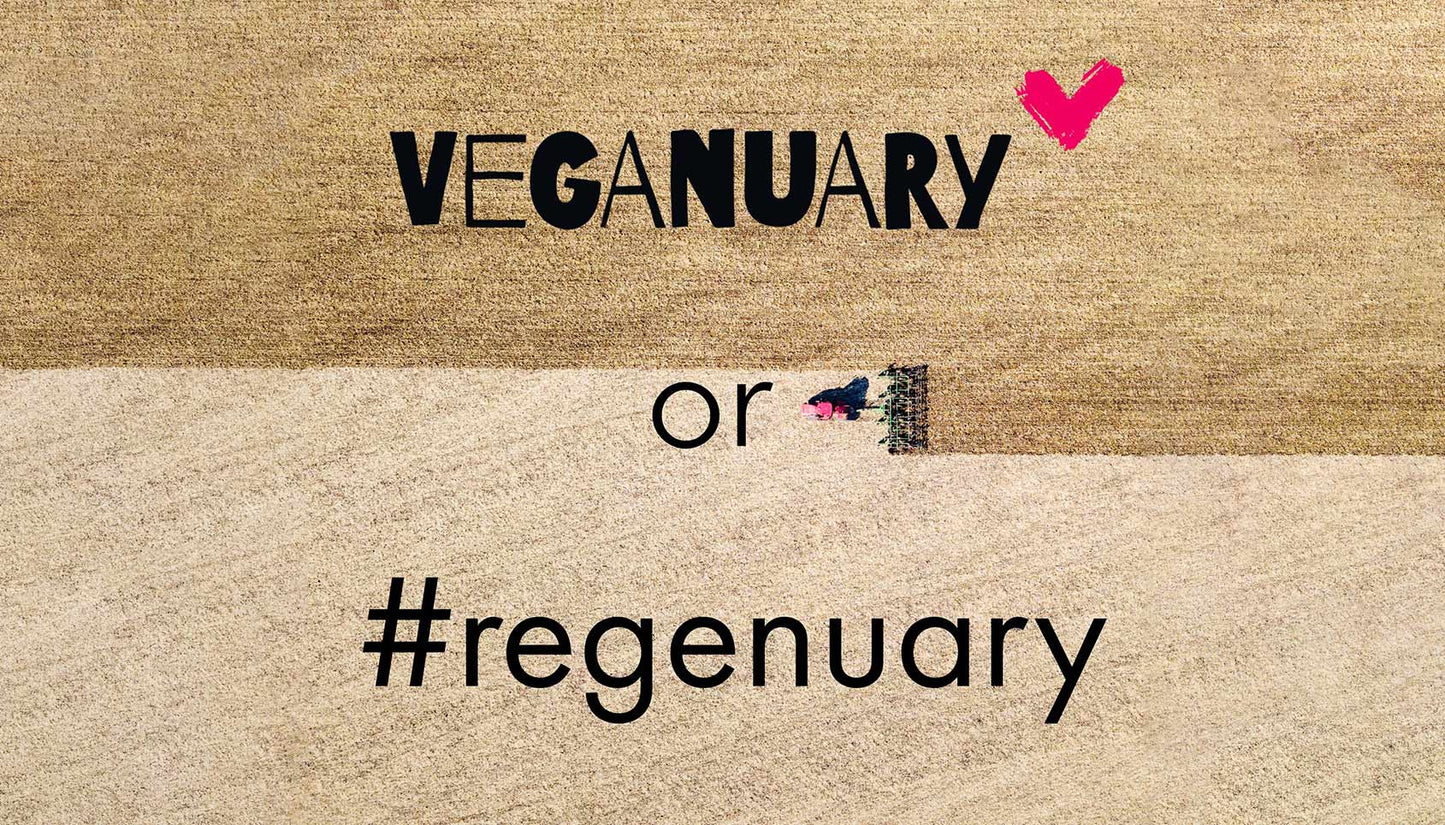We source our chicken from one farm in Leicestershire. The farm is Pasture for Life certified and rears truly free range, outdoor birds.

In no uncertain terms, the movement of Veganuary compelled us to conceive of Regenuary... but why, and how, are the two linked?
It's all about impact.
Every diet has impact and no plant or animal is inherently damaging to the planet or the environment. The impact, both positive and negative, all come from how and where that organism grows.
Impact is all about detail.
We started the movement of Regenuary to simply break the overly simplistic narrative from Veganuary that 'all animal agriculture always has a greater negative impact than any plant based agriculture', as this is far from true. As with so many things, the devil is in the detail. We will not defend the high impact methods used in animal agriculture, nor will we ignore the most damaging forms of arable.
We absolutely acknowledge that the worst forms of animal agriculture are much higher impact than the best forms of plant-based agriculture, where plants are grown industrially with the specific purpose of feeding animals in a factory system, for example.
Animals and plants can both be produced in ways that are either harmful or beneficial to the environment, and so we seek to openly discuss these methods, sorting the good from the bad through learning, educating and listening.
What is regenerative agriculture and how is it defined?
The paper here examines the difficulty of defining regenerative agriculture but for our purpose, we define it as:
Regenerative agriculture is a means of producing food that may have lower — or even net positive — environmental and/or social impacts. We prefer to define it as outcome-based, rather than a set of prescribed practices. These positive outcomes can include topsoil regeneration, increasing biodiversity, improving the water cycle, enhancing ecosystem services, supporting biosequestration, increasing resilience to climate change, and strengthening the health and vitality of farm soil.
Is it possible to be vegan and regenerative?
Regenerative outcomes are most commonly attributed to the correct management of animals within a farming system, however, there are increasing numbers of methods being used to achieve these results in pure arable systems as well as mixed or rotational systems, so yes, technically it is possible to eat a plant only diet and source everything from regenerative agriculture.
So, why were we so critical of Veganuary for the past few years?
As explained above, it is potentially easier to source your foods from regenerative suppliers if the diet is biased towards animal products rather than plants. This is especially true in Northern Europe in the winter — including in January. If someone decides to avoid all animal products for the month of January, they will most likely be consuming a larger number of imported and possibly processed foods than their omnivorous counterpart. This in itself isn't inherently problematic, but as the supply chain lengthens provenance becomes harder to trace, the true impact of production can be lost or hidden along the way.
How is the Regenuary campaign more inclusive this year?
One big change that we will be making to Regenuary this year is to start a directory of brands that are making positive change. This is either in production methods by using regenerative agriculture or using and up-cycling waste products as well as using low impact innovations in packaging and/or supply chain logistics.
This year, Regenuary will no longer be a simple discussion or debate: as of 2024, it comes to life as an actionable campaign to live by, giving consumers the possibility of making real positive change, regardless of dietary choices. Become a Regenuary Ambassador - spread the word and encourage change in your community.
This year we will include brands producing grains, pulses, oils, fruits and vegetables, as well as wines, beers and spirits. We will also be inviting the owners and representatives of these brands into conversations for round table discussions alongside one-on-one podcast type interviews.
Happy Regenuary!



